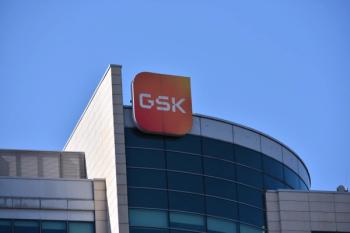
- BioPharm International-05-01-2006
- Volume 19
- Issue 5
Best Practices in Demand and Inventory Planning
The foundation of a sound supply chain planning infrastructure requires implementing a strong, systematic forecasting process.
In the pharmaceutical industry—as in any other—supply chain management is critical to a successful operation. Supply chain management includes demand forecasting and planning, distribution inventory planning, and plant capacity planning and scheduling. These activities help ensure that items are produced at the right time and delivered to the right place when they are needed. The proper mix of strategy, education, and systems greatly affects a manufacturer's overall operations and bottom line. Yet, many key decision makers in the pharmaceutical industry lack knowledge about the essentials of supply chain management. An understanding of this discipline can result in better coordination among organizational units and greater stability in the production plan.
Chris Taunton, PhD
DEMAND FORECASTING AND PLANNING
Implementing a good, systematic forecasting process is the foundation of a sound supply chain planning infrastructure. The benefits include a reliable forecast, greater stability of plans, and higher customer service levels, among other benefits.
Jonathan Feinbaum
Planners are often frustrated by the quality of the forecasts they receive from their sales and marketing organizations. Sometimes, planners override the marketing forecast and use their own judgement. While this is sometimes effective, it means that marketing and planning are not working to a coordinated plan.
Forecasts at each separate location are often the least reliable; through aggregation, a more credible forecast can be generated. By looking at multiple products of a similar type across all locations, a brand level forecast can be generated, further reducing variability and forecast error. Through a method of proration, adjustments to the forecast made at the higher brand levels can be prorated down to the location level.
This gives distribution a clearer expectation of shipping requirements, while giving production a better demand number for planning and scheduling at the plant level.
With today's technology, forecasting can occur instantaneously at the desktop, and the results can be easily shared throughout the network for use by multiple divisions within the organization (Figure 1).
DISTRIBUTION INVENTORY PLANNING
There is often confusion about the relationship between safety stock, reorder point, reorder batch size, and customer service levels. Many pharmaceutical companies develop production plans around "days of supply" or "cover period." Some will derive their figures by simply dividing annual demand by the number of forecast periods—without taking into account seasonality, trends, or the cost of production and carrying costs.
Generally, low-volume products should be produced less often, with a longer cover period so that production changeover costs are reduced. High-volume products should be produced more frequently. Reducing the cover period of production orders for high-volume products shortens the lead time for inventory replenishment and reduces the potential for stock-outs. Since inventory is replenished more frequently, effective service levels should improve, allowing production to be more fine-tuned to customer demand patterns. The converse is also true for low-volume items.
Figure 1. Leading forecasting systems can allow planners to generate reliable, statistical forecasts at multiple levels of aggregation, increasing accuracy for further planning processes of inventory and production.
Knowledge of basic inventory policies, and how they interrelate, can help planners develop an inventory replenishment plan that achieves stated customer service.
PLANT CAPACITY PLANNING AND SCHEDULING
Supply chain planning systems help companies tackle long-term strategic issues, such as business forecasting and global capacity, all the way down to short-term tactical issues such as day-to-day scheduling. However, the length of the planning horizon determines the degree of flexibility and the methods used to manage the plant.
Long-Range Planning Horizons
The planning horizon for a typical business is a rolling twelve-month period. This time horizon is often considered a demand forecasting problem. Because the forecast is used to drive the budget, distribution, and production planning processes, increasing the accuracy of the forecast is fundamental to improving the stability of these plans—i.e., distribution, inventory, production—and the overall return on investment.
Medium-Term Planning Horizons
Once a credible forecast is developed, planners can immediately establish distribution requirements, inventory levels, allocation of demand to plants and capacity planning (at the plant level).
To develop a long-range master production schedule, the planner must first establish inventory levels required for the finished products at each location. An inventory policy system provides essential help with this process.
The objective of an inventory policy system is to help the planner establish safety stock levels, reorder points, and reorder batch sizes over time, consistent with meeting a target customer service level. The location of the inventory is also considered during this process.
The inventory policy system builds on the forecast and is the driver for distribution and production planning. It formalizes the process of setting stock policy and allows the planner to look at the tradeoffs between inventory investment and service levels. Naturally, the aim is to meet the target customer service levels, while holding the minimum level of inventory.
Production Planning
Once inventory levels are established at each location, the planner can decide when and where (assuming multiple plant choices) production should occur. This is the function of the production planning system.
The production planning system covers months, weeks, and days as it resolves the trade-off between capacity, labor, and inventory. By planning the inventory requirements over time in demand forecasting and inventory policy, the planner can see the long- and short-term effect on plant capacity.
The planning model considers demand requirements, line capacity, and formulations required to meet the demand quantities and dates. Simulation capability tests different scenarios and considers multiple solutions quickly.
Benefits of improved planning using advanced planning and scheduling (APS) techniques include faster planning and replanning, increased stability of plans, reduced overtime, improved labor utilization, reduced changes in daily schedules, improved customer service levels, greater confidence in the plans, reduced inventory levels, increased plant throughput, and fewer changeovers because of better sequencing.
In most production planning scenarios, the objective is to resolve staffing, materials and capacity issues over weeks and months, rather than minute-by-minute or hour-by-hour—which is traditionally the realm of scheduling. At this level of planning, planners can work with average run rates and key resources, aiming at a good trade-off between the quality of plans and the ease of maintenance of the system.
However, some modern APS tools, include sophisticated facilities for modelling production, even at the planning level—e.g., batching rules, alternative routing and recipes, changeover logic, sequencing rules, etc.—to ensure the plans produced are realistic and optimal.
Short-Term Planning Horizons
Production planning drives long-range plans from demand forecasting. Short-range production plans must also resolve the replenishments of stock for the network of distribution centers, such as regional and local warehouses that ship to customer locations. The system considers each warehouse when deciding what products will be stocked and how much to stock in each location. As described above, the inventory policy system will recommend optimum stocking levels and reorder patterns.
Warehouse replenishment is based on the frequency and volume of shipments from the plant to the warehouse. This function is typically performed by a distribution requirements planning system. Distribution requirements planning systems plan the transportation frequency among the network of distribution centers, while considering the plant capacity established in the production planning system. By varying the frequency and capacity of transportation, the projected inventory availability at the outlet can be simulated.
Distribution requirements planning systems help reduce transportation costs; improve customer service levels; reduce stock-outs at distribution locations; improve communication between sales, distribution, and production; increase stability of plans; and ensure the right product is at the right place at the right time.
Short-term changes in demand are always a reality, but the combination of better forecasting with a formal process of warehouse replenishment leads to fewer disruptions, less contention, and lower overall costs.
INTEGRATING WITH ENTERPRISE RESOURCE PLANNING
High-quality planning is simply not possible if the inventory data are inaccurate or out of date—or if the formulation information is incomplete. The forecasting system requires accurate sales history. The distribution requirements planning system requires accurate inventory balances. The capacity planning system requires meaningful plant capacity and product structure (recipe) information. Such data are generally available in most of the better ERP systems available today.
Supply chain planning systems are available in various forms of delivery: stand-alone, an APS server connected to the ERP host machine via a network, and hosted solutions (software service). The supply chain planning system receives information updates from the ERP system periodically (weekly, daily, etc.). Planning and scheduling issues are resolved through systematic processes that involve simulation and modeling.
Planning is generally done periodically, according to the task at hand. Therefore, forecasts may be updated weekly or monthly, the production plan may be updated weekly or daily, and the finite schedule may be run at the end of a shift or a day.
The supply chain planning system needs to be refreshed with new status information. This might include dynamic data such as on-hand inventory of finished goods, intermediates, and raw materials; updated demand (forecast and orders); expected purchase receipt timing; and planned downtime.
In addition to the dynamic data, the planning system must be updated periodically with static information, such as new products recipes and operations, new plant resources with their operating characteristics, and new warehouses or new transportation options.
Because the ERP system will be integrated at several data points, careful consideration must be taken to ensure all data are up to date and accurate. Interfaces become very complex if the underlying ERP system is highly customized or spread over multiple servers and databases. Therefore, the best results are usually achieved through an integrated ERP system that covers all the underlying business functions.
BETTER CONTROL OVER THE PLANNING FUNCTION
To make sound tactical and strategic decisions that impact profitability, decision makers must have better control over the planning function. Manufacturers must invest in supply chain planning education, systems, and practices that empower decision makers. Planners should have enough supply chain management understanding to know where to look, what questions to ask, and how to interpret information. They don't need to know all the underlying statistical techniques. But they do need an easy-to-use system that can perform the calculations quickly and generate credible results. The combination of an effective system, along with forecasting and planning know-how, can yield significant results.
Chris Taunton, Ph.D, is the Director of Product Management for Ross Systems, 2 Concourse Pkwy, Atlanta, GA 30328, tel 678 259-8582,
Jonathan Feinbaum is Senior Supply Chain Consultant for Ross Systems, tel 678 259.8794,
Articles in this issue
over 19 years ago
Final Word: Creative Solutions Can Ensure Pandemic Flu Preparednessover 19 years ago
Facility Design and Expansion: Commissioning for Innovationover 19 years ago
Letters to the Editorover 19 years ago
Maximizing Protein Expression in Filamentous Fungiover 19 years ago
From the Editor in Chief: Engineering Oneself Out of a Jobover 19 years ago
StreetTalk: Investments in Avian Flu SoarNewsletter
Stay at the forefront of biopharmaceutical innovation—subscribe to BioPharm International for expert insights on drug development, manufacturing, compliance, and more.




